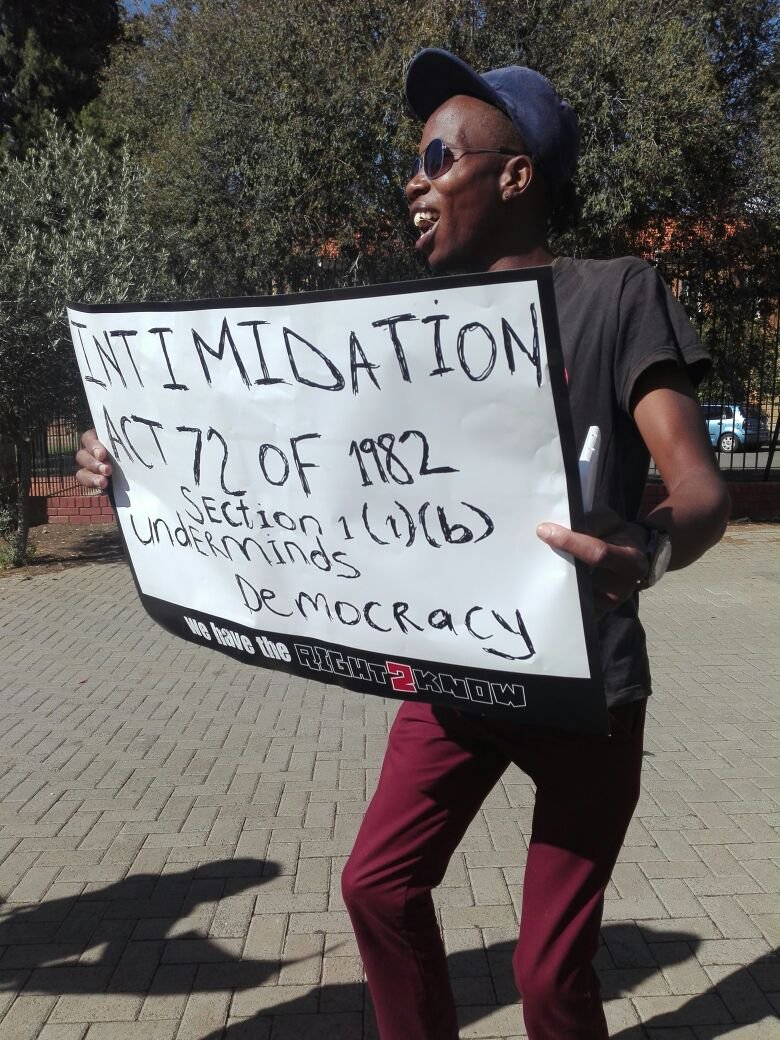Print media diversity, transformation in SA: myth or reality?
The following article was published online by the Bizcommunity
Black participation in the South African print media industry currently stands at 14% and women in board and senior management is 4.44%, as white-owned groups (Caxton, Independent Newspapers, Avusa and Media24) continue to own the big chunk and call the shots. “The industry has not transformed enough at all since 1994,” MDDA CEO Lumko Mtimde told Bizcommunity.com.
- A report presented recently by Print Media South Africa (PMSA) to the parliamentary portfolio committee on communications (PPCC) contains the following trends:
- Average black board membership: 17.8%
- Average black executive board members: 28.1%
- Average black senior top management: 70%
Says Mtimde, “Whereas print media is committed to democracy, embracing changes, [and] partnering with MDDA to support media diversity, but in real terms there is little meaning and substance given to the commitment.”
Areas requiring improvement
He says areas requiring improvement in terms of print media diversity and transformation include market structure, ownership and control, management, employment equity, gender stereotypes and conditions of employment in the newsrooms.
Areas such as content, advertising, printing, distribution, geographical representation and language are also in need of improvement, according to Mtimde.
William Bird, head of Media Monitoring Africa (MMA), tells Bizcommunity.com: “If we are asking, ‘Has there been transformation in the last 17 years?’ – the answer is yes, clearly and unambiguously.
“Are we where we want to be? Not yet.
“Transformation should be viewed as a journey. So, in just the same way as we would not say we are where we would like to be as a country – in terms of gender equality, for example – we are not where we want to be in terms of our media.”
Increasing black ownership a unique challenge
While PMSA admits that increasing black ownership among the four largest print media houses (aka the Big Four) presents a unique challenge as the transactional costs are high, it says, however, this does not mean that a unique solution to increasing black ownership in this subsector must not be found.
“How do we get to where we want to be?” Bird asks, adding that pressure can be applied and greater diversity can be encouraged, but where issues of concentration and unfair business practice arise, the country should support systems such as the Competition Commission to address these.
So-called small and independent publishing houses, mostly under-funded, under-equipped and lacking management and business skills, have often accused the Big Four of bullying and uncharacteristic business behaviour – an issue that raises the ire of the Competition Commission and causes questioning of these media groups’ commitment to embrace tolerance and change.
“A key issue is that community newspapers are struggling to survive and one of the reasons is the competitive environment that is skewed in favour of the Big Four,” Rhodes University media professor Jane Duncan says.
“Real complaints”
“A number of these papers had real complaints to make about the conduct of Caxton and Media24 especially, and it was very important that these issues reached the public domain, as it is a less savoury but not a well-acknowledged problem in our country’s media system.”
Addressing media owners in early August 2011 in Pretoria, President Jacob Zuma said, “Let me stress as well that all of us – government, society and the media industry – have a responsibility to develop a free and independent media in our country. We need to strive towards a media that is truly free of political, commercial, factional and other interests.”
Also important, Zuma added, is the need to promote diversity and transformation within the industry.
But, when the government feels that the print media industry’s commitment to promote diversity and transformation is not as sincere as it claims, it wants to intervene, as government insiders put it, in the aim to ensure that those who resist change and are still stuck with their old mentality, and continue to manipulate the media space to undermine nation-building, are held accountable.
Questioned the intervention
However, some commentators have questioned the ANC-led government’s intervention, stating that it smells of hidden agendas, such as controlling the media by introducing the highly publicised media appeals tribunal (MAT).
The PPCC recently hosted a media indaba on diversity and transformation – a gathering it described as a preliminary discussion aimed at a strategic review on developments in this regard since 1994. The committee also said that it was evaluating challenges inhibiting change in the public interest, and therefore developing ideas to enhance transformation and media diversity.
As speculation mounted that the government was using the issue of media diversity and transformation to introduce the much-feared MAT, Bird says: “Will such a tribunal have any impact on ownership and transformation? Not at all.
“What we can be sure of is that if we introduce any structure that may limit media freedom, the quality of media will go down. The point is simple: there is no country where media freedom is limited that has quality journalism. You can see this in our region and beyond.”
Key stakeholders not invited
The PPCC’s biggest mistake, however, was not to invite key stakeholders such as the South African National Editors’ Forum (SANEF), MMA and several groups opposed to the MAT.
Bird tells Bizcommunity.com: “We were not invited and I’m not in a position to comment for the others. We did, however, contact Parliament and, as it was public meeting, we were then invited to attend.”
Duncan, who alongside Julie Reid of the University of South Africa (UNISA) presented on behalf of Right2Know, says: “I want to put the record straight that R2K was invited.
“However, there was confusion about who was invited and who wasn’t. Some organisations were on the programme but not invited. Organisationally it was a mess and we objected. The chair [Eric Kholwane] apologised for the manner in which the indaba was called.”
Process was less than optimal
The MMA, according to Bird, noted in its submission that the process was less than optimal, being so rushed, and stated that it hoped it was the start of a more in-depth consultation on ownership and transformation issues.
Bird adds: “We also noted that the short notice, the exclusion of certain voices and the lack of clarity about its exact purposes, was the kind of thing that fed conspiracy theories.”
As the meeting unfolded in Cape Town, media corridors were already abuzz with saucy rumours, perhaps aggravated by newspapers reports that proceedings into the much-feared MAT were finally about to begin.
In the Mail & Guardian on 16 September 2011, Glynnis Underhill wrote: “The ANC appears to have initiated its long-threatened parliamentary inquiry into a statutory MAT in the form of a parliamentary indaba on diversity and transformation.”
No discussion about MAT took place
But, contrary to these reports and rumours, no discussion about MAT took place at that meeting.
Bird notes: “It was interesting that during the hearings they specifically excluded any discussion on the MAT, as it is clear this will be discussed sometime next year.”
As the industry became anxious about the outcome of that meeting, Duncan urged the media not to simply dismiss the indaba as another attempt to curtail its freedom. She says: “The industry needs to be much more strategic about how it engages with this process, because without significant levels of transformation, it will lack social legitimacy.”
Mtimde says this week that it is rather mischievous of anyone to link the debate on transformation of media – in respect of the structure, ownership, management, employment equity, content, advertising, printing, distribution, among others – to a debate on media accountability mechanisms and the proposal for a media appeals tribunal.
‘Deliberately made to divert attention’
“It seems the link is deliberately made to divert the attention of SA from the transformation imperatives in the print media,” Mtimde, who is also a senior ANC and SABC board member, says, adding that the MDDA had welcomed the meeting.
While a study conducted by Transcend reveals that the SA print media industry presents a Level 5 BEE contributor to BBBEE with a score of 62.92 points, Duncan was highly critical of the Big Four, stating that they were underperforming in this area and stating that these shortcomings were making them vulnerable to attack for lack of transformation.
“This is a vulnerability that they have brought on themselves, although admittedly the trading conditions have been tough,” she says.
“With this underperformance, it will be difficult for the industry to resist a charter, and the industry needs to confront this problem head-on instead of sticking its head, ostrich-like, into the sand. Furthermore, there is no doubt that this underperformance can be used to push for more controls of newspapers, including the MAT.”
“Weaknesses were freely admitted”
Duncan also cites issues such as skills development, employment equity, and [black and women] management, which she said are severely lagging in the industry. “All these weaknesses were freely admitted by PMSA, which to their credit did not try to hide or soften the picture.”
PMSA said in its report: “Although the consolidated BEE score for management in the print media industry is relatively consistent across the four large companies, it is recognised that the industry’s management is not sufficiently diverse to be completely representative.
“This stance is borne out in the Employment Equity statistics for each of these four large companies. The employment equity score is significantly lower than the percentage achievement in terms of the BEE Codes for management.
PMSA admits that the employment equity score is affected by the lack of both gender diversity in entities and disabled employees in employment.
Deliberately hampering transformation?
It is believed that the Big Four’s alleged hostile business behaviour is now under the spotlight, as the government is due to put them under extreme pressure to see if they are deliberately hampering transformation.
R2K also accuses the industry of veering dangerously towards excessively high levels of concentration.
“The dominance of Media24, whose titles commanded 39% of circulation by 2009, is of particular concern. No newspaper group should be allowed to become too dominant for democratic reasons, as this group can control public discourse to an unhealthy extent,” Duncan argues.
“So, while there are real and understandable suspicions about the motives for calling the indaba, the fact of the matter is that transformation is a problem in the industry and needs to be addressed.”
Call to prioritise probe
Mtimde says after listening to a range of inputs from MDDA, Competition Commission, ICASA, MICTSeta, F&PMSeta, R2K, PMSA, the committee chair called on the Competition Commission to prioritise a probe into a possible anticompetitive behaviour into the print media business processes, and the entire value chain.
“Print media is not immune from all other SA sectors [which], post-1994, needed to transform, as it is a constitutional imperative [in terms of the Constitution Act of 1996] that states that imbalances of the past be prioritised, freedoms be enjoyed by all, access to information, freedom of expression, right to communicate and media freedom be enjoyed by all and historically disadvantaged communities be mainstreamed in the economy.”
“Newspapers are on the cutting-edge of journalism. They are breaking the most important stories, and without them, corruption and mismanagement could run rampant in the private and public sectors,” Duncan says.
“But until newspapers reflect more faithfully the diversity of the society in which we live, they will be vulnerable to attack, and they will also find it difficult to galvanise public support to defend themselves against such attacks.
“This is why media transformation, and how to achieve it, must occupy at least as much of our attention as the question of media freedom and how to achieve it. They are interdependent concepts.”
SANEF was not available for comment.
Source Bizcommunity



